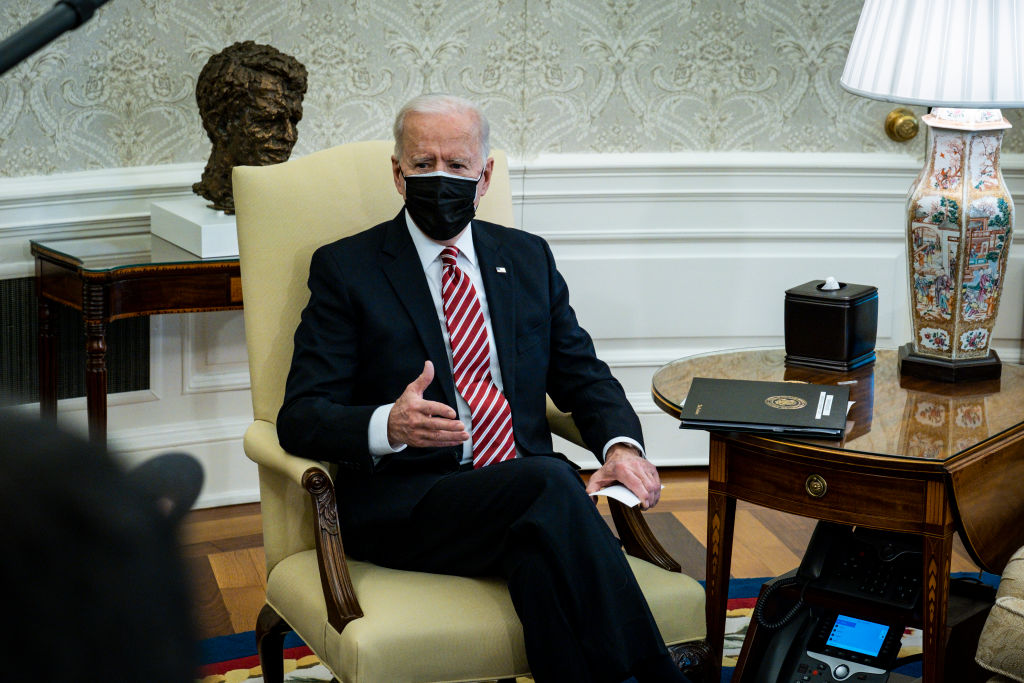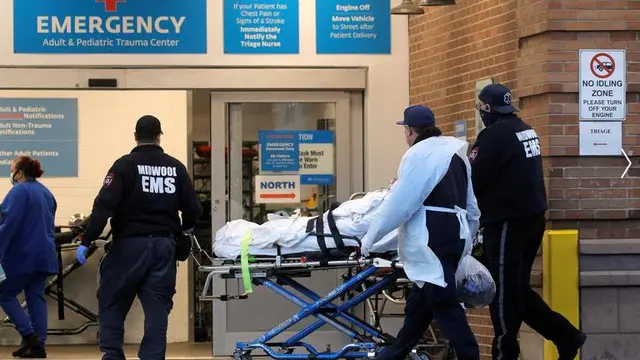Editor's note: Bradley Blankenship is a Prague-based American journalist, political analyst, and freelance reporter. The article reflects the author's opinions and not necessarily the views of CGTN.
The U.S. Senate passed its version of the 1.9 trillion dollar Biden stimulus package on March 6, which includes several programs that put money directly into people's hands, namely 1,400 dollar direct payment cash payments, 300 dollar weekly unemployment benefits through the summer and a 3,600 dollar child allowance. While this will probably lead to an uptick in consumer spending in the short-term, can we expect consumer spending to keep pace once the country reaches herd immunity?
Many people seem to think so, and there's at least some precedent to base this on. Through pretty much every major economic crisis the country has faced, pent-up consumer demand seems to be unleashed at the tail end. But this way of thinking fails to appreciate exactly how unique the current economic crisis is and how unique the response to it has been.
As finance and economics writer Wolf Richter wrote a few weeks ago, "Give Americans some free money, and tell them it's their duty to buy some stuff with it, preferable stuff imported from other countries, and they'll buy some stuff with it, big and expensive stuff too, and they did buy a lot of stuff with it, more than they'd ever bought before, and their homes are full of stuff they bought in this eight-month-long record rollicking free-money spending spree."
He made the rather convincing argument that we should not expect to see "pent-up demand" when that demand has actually already been exhausted.
Whereas in past crises, consumers cut their spending. This time, people received federal enhanced unemployment insurance that was often higher than the wage they received at their job on top of direct stimulus checks. It means that people had the money, and were highly encouraged, to spend this excess on goods.
On top of this, millions are still in forbearance on their mortgages, federal student loan payments were paused, and eviction bans have made it, so people don't have to worry about rent – for now. The wealthy have also seen the value of their assets skyrocket due to the fed-backed bull market, prompting many to feel safe to spend more. All of this amounts to more money circulating in the consumer economy.

U.S. President Joe Biden met with labor union leaders to discuss and promote his $1.9 trillion coronavirus economic stimulus plan. /Getty
But what happens as the U.S. approaches herd immunity against COVID-19, starts to return to normal, the stimulus money vanishes, bills reappear and the Fed potentially hikes interest rates? Well, it's safe to say people won't be splurging on consumer products because they probably already bought those things anyway.
In contrast with this, consumer spending on services has been knocked because of COVID-19 and its corresponding restrictions. Consumers have been unable to spend money on services, like travel and entertainment, due to everything that's happened. Undoubtedly, people are eager to go out and spend, but services differ in that it would be hard to consider this "pent-up" in the same sense as demand for goods.
After all, would someone go out to a restaurant and order two meals instead of one every time for a year because of pent-up demand? Would someone get their hair done more often to make up for the appointments they have missed during the restrictions?
I realize I may be setting myself up here for a joke in the future when viral content comes out about people going overboard at clubs or restaurants once things open back up, for example, but for the general public, the answer is probably no. The damage that was done to service-sector industries is going to be lasting, if not permanent.
All of this speaks to the much broader the fact that the problem for the U.S. economy has not just been the coronavirus, but rather that the coronavirus merely exposed the structural problems of the economy. Yes, the federal stimulus programs have been necessary to keep people whole through this mess; they've been a buoy of support for the real economy – but they are not sustainable under the current scheme.
So the real thing for policy-makers to do now is not to start shaking the champagne bottles for when the country reaches herd immunity and opens up, but to figure out how to keep high-level consumer activity sustainable. That is going to be a serious challenge for the rank-and-file in Washington.
(CGTN)
 简体中文
简体中文

